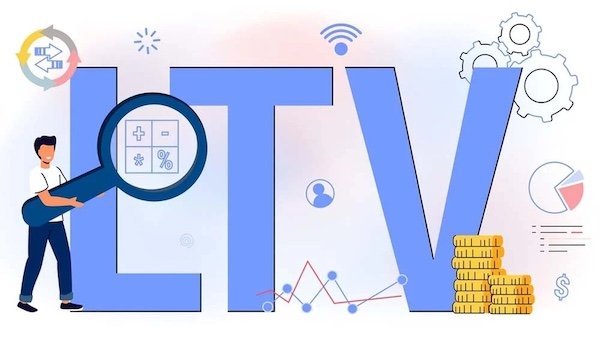No products in the cart.
- Home
- All Passive Income Methods
- Want to See How Much Other People Earned?
- Beginner’s Guide to Passive Income
- My Journey on Passive Income that 99% Population Don’t Hear About
- Litigation Financing – 30% ROI Anyone?
- IPO Under 90 Days!
- IPO Hopeful
- Unicorn Potential?
- An Enjoyable Hobby That Appreciates Too?
- Microlending in Africa
- How You Profit from Beyoncé and Bieber?
- Private Lending
- Tax Lien & Tax Deed in US
- You Can Still Get Bitcoin for $50K???
- A New Strategy with 40%–90% ROI in Year 1
- About Us
- Contact Us
Private Lending (7) – LTV?
Continuing from the last post, we’ve roughly covered the underwriting process. However, the most crucial aspect is the final calculation. What exactly are we calculating?
At the heart of it all is calculating the LTV (loan-to-value ratio) and the property’s debt ratio, which is essentially (existing debts on the property + applied loan amount) divided by the property’s market value. Let’s illustrate with an example. Suppose a property is assessed to have a market value of $1 million, with an existing bank loan of $600,000. If the homeowner applies for a second loan of $100,000, then the LTV would be calculated as (600,000 + 100,000) / 1,000,000 = 70%.
In other words, if this second loan is approved, the homeowner has 30% equity in the property. If the market declines, the homeowner’s equity is depleted first before the lender’s 70% portion is affected, as the homeowner ranks behind the lenderin repayment priority. (This sentence omitted many details for simplicity.)
Every time I discuss this with someone, I always like to ask: Is it better to have a high or low LTV?
However, at this point, I need to explain a few concepts (I assume I’m writing for beginners, so I’ll try to cover all the basics; those who are familiar can skip ahead).
For those who have done this before, you might know that this is called Private Mortgage. It refers to the practice where borrowers use their own property as collateral to borrow money from ordinary people like you, me, or others. This property can either be a newly purchased property or one that the borrower already owns. Private mortgages are divided into many types based on priority, with the most common being first and second mortgages. This represents the order in which you, as the creditor, will be repaid. The first mortgage holder is repaid first, followed by the second mortgage holder, and so on. Therefore, under otherwise identical conditions, the risk is lowest for the first mortgage, followed by the second, and so forth.
For example, within private lending, the most common type we used to deal with was the second mortgage because if the market doesn’t experience a catastrophic crash, the risk is manageable, and borrowers are generally willing to pay double-digit interest rates. In the event of a foreclosure or power of sale, after deducting legal fees and transaction costs, the proceeds from the sale first go towards paying any government debts and the first mortgage (usually the bank), before paying back the principal, interest, and penalties to us as the second mortgage holder. If there are no other creditors afterward, whatever remains goes to the homeowner.
The principles of private lending are similar to other investments, in that risk and return are generally proportional. Under identical conditions, the closer a creditor is to the front, the lower the risk and interest rates; conversely, the further back a creditor is, the higher the risk and interest rates.

Additionally, it’s worth noting that when we talk about private lending here, we are referring to residential property mortgages, not the commercial real estate or joint development projects that are prevalent in the market. While those also fall under private lending, the collateral, risks (mainly developmental risks), and exit mechanisms are entirely different. Consequently, the returns and risks are also different, but average people won’t know the difference. So, for these development projects that involve construction, While it may seem like the interest rates are high, the associated risks are often disproportionate, so it’s essential to clarify this.
Having covered these basic concepts, let’s return to the initial question: if this is a second mortgage application, is it better to have a higher or lower Loan-to-Value (LTV) ratio? It depends.
If you’re a lender, a lower LTV ratio is preferable! This means that a higher proportion of the homeowner’s money is invested in the property, so if there are losses, they will be incurred by the homeowner first, making it safer for the lender.
On the other hand, if you’re a homeowner, you naturally want a higher LTV ratio so that you can borrow more money from the lender, leaving less of your own money invested in the property and thus reducing your risk as a homeowner.
These are the most fundamental points to share. Now, how do you actually make decisions in mortgage underwriting? This breaks down into three main areas: whether to lend or not, how much to lend if you do, and how to structure the loan. Let’s discuss more next time!
